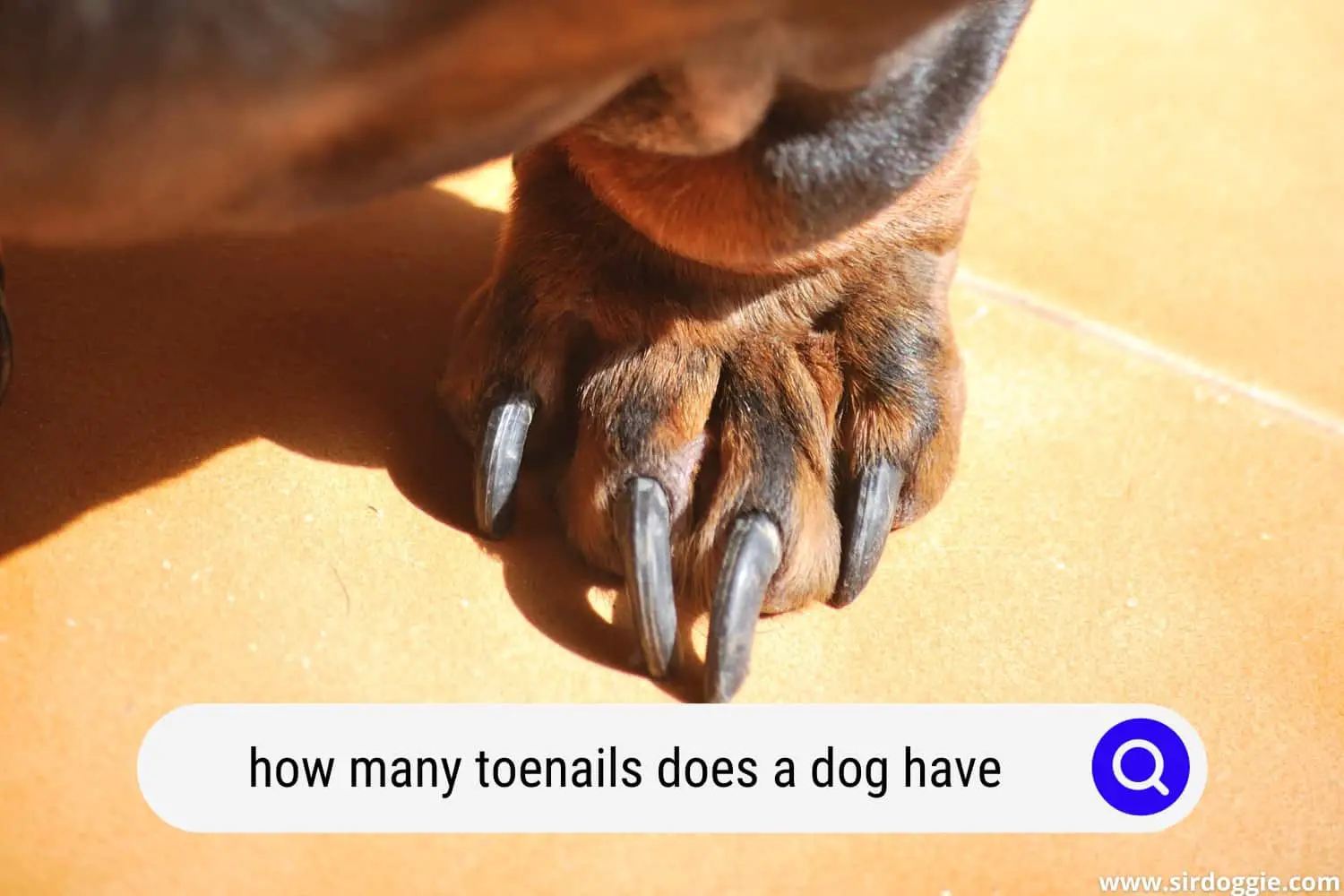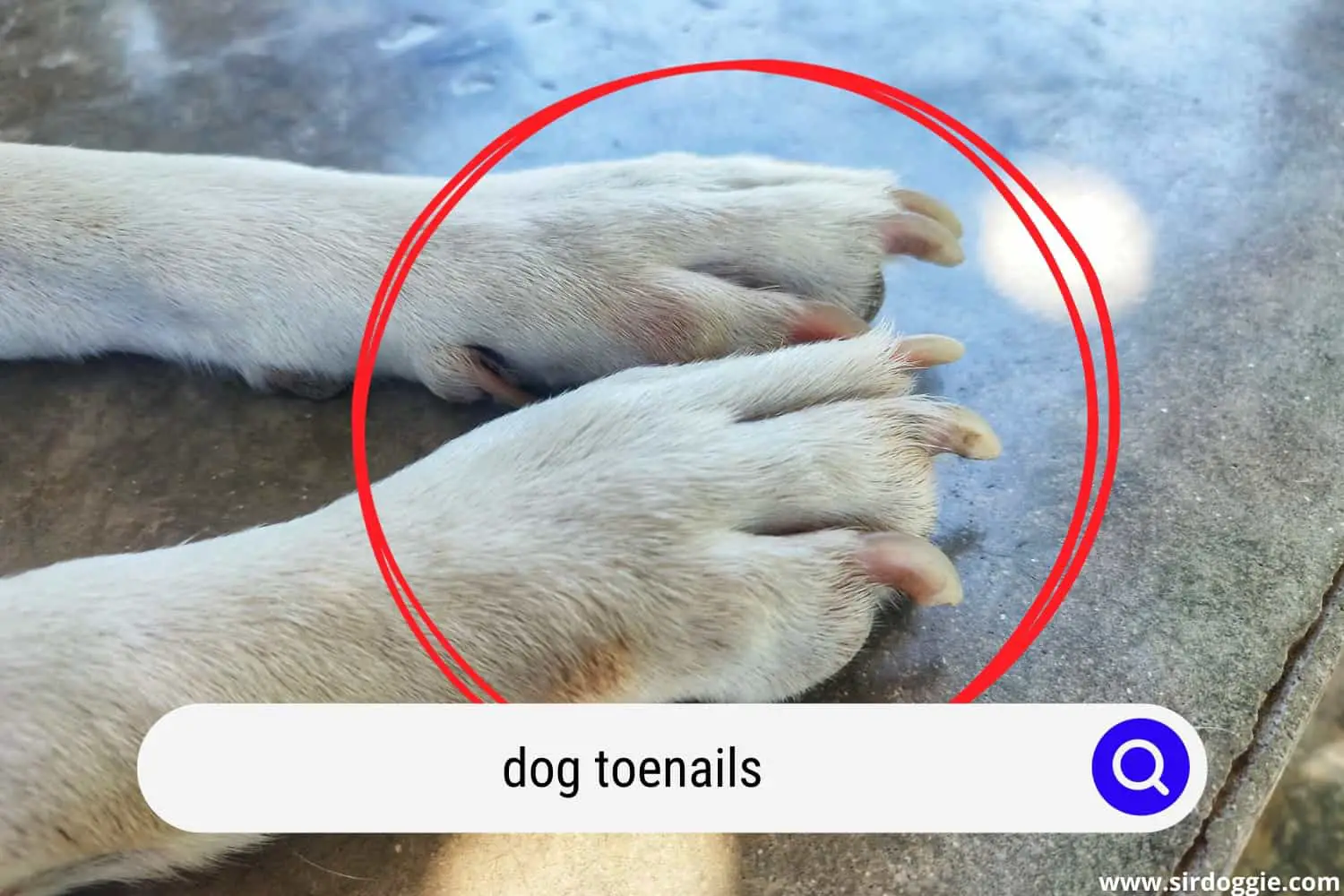How Many Toenails Does A Dog Have?
Are you a dog owner who is passionate about everything having to do with your dog? Or are you a dog enthusiast planning to adopt a dog in the future? You may have taken the time to understand the nature of your furry friend, but maybe you still have some lingering questions on your mind.

Having answers to some of your questions would contribute immensely to the humane management of your dog. Even though you are the owner of your furry friend, there are still some fundamental freedoms pertaining to your dog that you shouldn’t tamper with, or else you will face sanctions from animal welfare advocates. Not properly caring for your dog can also lead to some unforeseen bills if certain issues are not prevented.
On to the topic of our article, though: how many toenails does a dog have? According to Doghealth.com, none! Dogs don’t have nails; instead, they have claws. Their claws have blood vessels and nerves, as well as an attachment to the underlying bone in your dog’s feet. These aforementioned features are absent in what we properly classify as nails; however, most dog breeds tend to have eighteen claws.
Fascinating, right? Take a breath, have a glass of water, and stay calm to prepare yourself to read further to get in-depth clarification about the number of toenails a dog could have.
Dogs do not have toenails; they have claws.
Yes, you read that right! Dogs lack nails but have claws with blood and nerve vessels in them. Dogs’ claws are made of keratin, with a pink living quick and a hard outer material called the shell. The quick supplies blood to the claws and runs through the core of the claws.
This is the reason that dogs show discomfort and pain over claw trimming. However, routine dog claw maintenance or management is mandatory for their health rather than being a strictly cosmetic procedure. A regular claw trimming will cause the quick to recede from the rare.
Short quicks are the preferred length for your dog’s health and well-being. Long claws can lead to a splayed foot with reduced traction, causing deformed feet and injury to their leg tendons over time. Therefore, claw trimming is an important part of dog grooming because it is an essential part of your dog’s health and hygiene.
Dogs typically have five toes on the front and four on the back. That translates to a total of eighteen claws along with the dewclaws, which are sometimes referred to as the ‘thumbs’. Some breeds of dogs have extra dewclaws which are regarded as a genetic defect.
Extra dewclaws are commonly found in breeds used for guarding flocks, such as Poodles, Anatolian Shepherds, and Rottweilers. However, the Great Pyrenees, also considered a ‘polydactyl’ breed of dog, are often seen with extra claws. Sometimes they can be seen with six toes, having claws on their rare feet.
Tricks for Clipping a Dog’s Claws
Clipping your dog’s claws comes with benefits. Some of the importance of clipping your dog’s claws include the following:
- It helps your dog maintain balance and posture.
- It saves dogs from arthritis, flattened and splayed feet, and mobility issues in the long run.
- It improves their overall hygiene, health, and well-being.
- Although not the most important, it is also an appealing cosmetic procedure.
However, you don’t use common scissors or blades to clip dogs’ claws. There are commercially available claw-trimming instruments that should be used. Therefore, whenever you need to clip your dog’s claws and lack the expertise to do so, do not hesitate to visit your veterinarian or dog groomer for the service.
The reason for this is to avoid subjecting your dog to unnecessary trauma and pain, as it requires some technical know-how to do. Therefore, consult any of the professionals earlier and provide your dog with the best and safest aesthetician possible.
Nevertheless, there are some tricks you can follow to clip a dog’s claws successfully. With the claw trimmer in your hand, hold onto one nail, and trim it carefully. Encourage your dog by praising them and giving them a treat. After trimming a few of the claws on one paw, stop, play with your dog, and take a rest.
Repeat the same procedure, and you will achieve your goal with ease. Below are some of the procedures you can follow:
- Restrain the dog by placing it on the table with your arms and upper body over them. You should be on the side opposite of the claws you want to trim.
- To trim the front claws, your left forearm should be over the neck of the dog to prevent it from lifting its head.
- Place the paw in your left hand and the trimmer should be on your right hand.
- Whenever your dog tries to stand or raise its head, lean your upper body over its shoulders to prevent it from doing so.
- You can now go ahead and use the trimmer to trim the claws.
There are varieties of commercially available trimmers that you can use, including a scissor-type trimmer and a guillotine-type trimmer. The guillotine types are the easiest to use with dogs. The scissor types are used for trimming the long-toe claws that are curling into a circle.
Dewclaws often grow long because they do not touch the ground and therefore do not wear down while the dog walks. They are attached to the leg by loose skin folds. They should be lifted away from the leg so that a guillotine-type trimmer can be fitted over the tip of the dewclaw for easier trimming action.
You should also start exposing your dogs to claw trimming right from when they are young so that they can get accustomed to it as they grow. To learn more on how to use either a guillotine-type or scissor-type trimmer (see Amazon) and achieve excellent claw-trimming success with ease, click here!
Related Questions
Why does my dog have five toes on its back feet?
Dogs usually have 5 toes on their forelegs and 4 toes on their hind legs. However, some dogs are characterized by genetic malformations that make them have 5 toes on their back feet, with these extras being referred to as dewclaws. Certain breeds of dogs such as the Mastiff and Saint Bernard often present this genetic abnormality.
Other breeds that are known to have dewclaws are Rottweilers, German Shepherds, and even some of the small breeds like Yorkshire Terriers and Poodles. It is best to consult your veterinarian when your dogs are young to trim off the growth. Do not ignore the growth as it can expose your dog to certain associated health problems.

How many claws does a dog have?
The number of claws a dog has depends on which breed one is dealing with. However, most breeds typically have 4 toes on each front paw, each toe has one claw, and they have a dewclaw on each of their front paws. However, depending on the breed, there may be differences when it comes to the hind legs. Some breeds only have 4 toes with the respective number of claws.
A few breeds such as the Briard, Great Pyrenees, or Beauceron—to name a few—have dewclaws on their hind legs in nearly all cases. So, depending on the dog breed, the total claws could be between 18 and 20. Sometimes, the Beauceron (a French breed) is seen with double rear dewclaws, amounting to a total of 22 claws.

Family Dog Expert Author
Hi there! I’m Stuart, a devoted dog lover and family dog expert with over a decade of experience working with our furry companions. My passion for dogs drives me to share my knowledge and expertise, helping families build strong, loving bonds with their four-legged friends. When I’m not writing for SirDoggie, you’ll find me hiking, playing with my beautiful dog, or studying music.